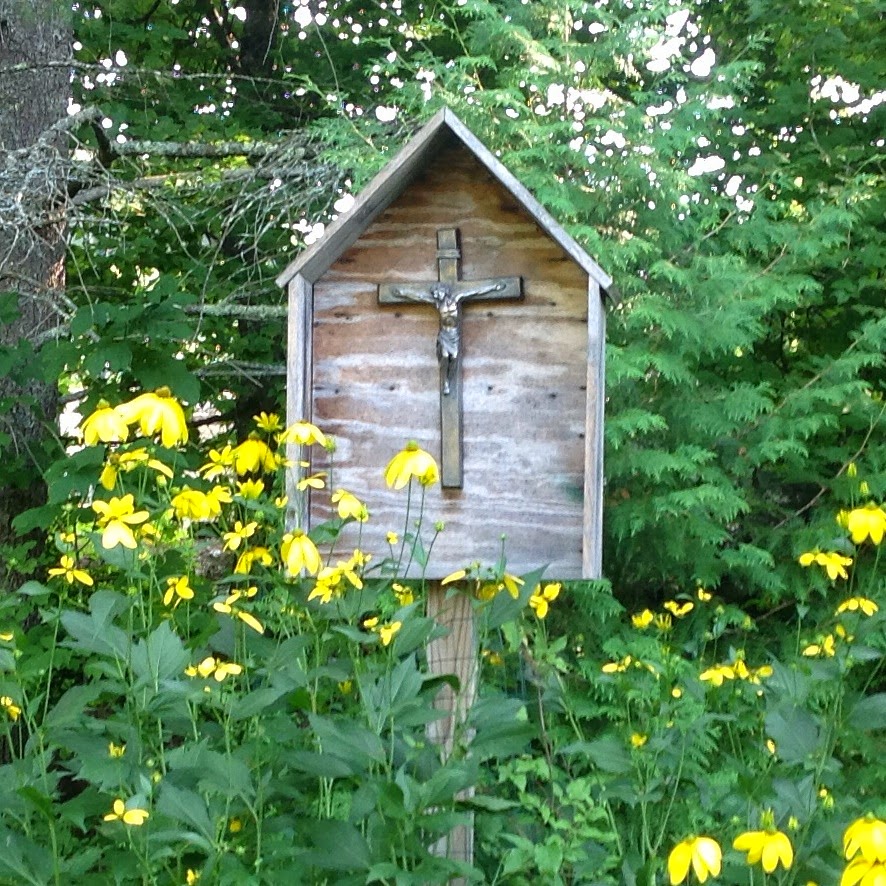Welcome to Sunday
Snippets – A Catholic Carnival . . . which reminds me, it’s almost fair season here
in the State of Maine, when my lovely bride and I take our fine progeny off to
see enormous pumpkins, sheep shearing and an event called the “pig scramble”
that must be seen to be believed. But
that’s not the kind of carnival I’m talking about here. No, Sunday Snippets is a gathering of
Catholic bloggers who share their posts for the week, and there’s no “midway”,
although we do have a communal site [here]
at This
That and the Other Thing, presided over by the sober and sensible RAnn,
where you the reader can wander along and sample at leisure from a variety of
booths . . .I mean, blogs…
Anyway, fair season . . . It’s funny, but as Summer dwindles and we move toward Fall, it feels like a time of renewal. There are good reasons for that, of course: as the air gets cooler and drier (at least in these parts) we naturally feel less lethargic, more energized. Also, I wouldn’t be the first to see in the yearly cycle of decline and renewal a reflection of the God who dies and rises again: the dying of the year is a reminder that Easter lies on the other side.
Anyway, fair season . . . It’s funny, but as Summer dwindles and we move toward Fall, it feels like a time of renewal. There are good reasons for that, of course: as the air gets cooler and drier (at least in these parts) we naturally feel less lethargic, more energized. Also, I wouldn’t be the first to see in the yearly cycle of decline and renewal a reflection of the God who dies and rises again: the dying of the year is a reminder that Easter lies on the other side.
We have also been
conditioned from an early age to associate the arrival of Autumn with the
beginning of a new school year, with all its feelings of promise and dread. For some of us that same cycle continues well
into adulthood (I’m talking about teachers, not perpetual students). Accordingly, in addition to enjoying some
beautiful late Summer New England weather this past week, I spent a few days at
school preparing to meet the students who will be coming through my door
Tuesday morning.
This weekend we also went to another school, bringing our first-born for his first year of college.
Talk about dread. And all too often,
it’s not simply the normal apprehension of letting one’s child loose in the
wide world. One can’t be too careful
about colleges today, what with venerable and respected institutions hosting the
like of “Sex Week” [here, for
mature readers only] and “Kink Clubs” [here,
also for mature readers]. Even ostensibly Catholic schools don't think twice about giving a platform to Planned Parenthood [here],
the world’s largest abortion provider.
And that’s not even taking into account the foolish and deadly things
that take place in many classrooms.
Fortunately. The
Cardinal New Society [here] –
and, yes, this is a plug – can help you (it did for us) find a Catholic Institution of higher
learning that actually does offer “higher” learning, and will have no part in
the ugliness cited above. No matter
where you go there will be no shortage of dangers and temptations, but it’s
good to know that there are still some colleges that don’t actively connive in
the corruption of our sons and daughters.
OK, I said my piece. Now, on to the posts for the week:
Monday – Don’t
tell anyone, but when I was young I used to get Haydn confused with Handel. Of
course, that’s not happening here, I just thought Haydn could, you know, use a
break from his comeback tour. And this
is a very cool piece of music. “Handel: Arrival Of The Queen Of Sheba” [here]
Tuesday – In
which I discover once again that missing confession for an entire summer is not
a good plan. “Confession Is Good For The Soul” [here]
Wednesday – A
little reverence never hurt anyone, especially directed toward our Lord and
Creator. “Quick! What’s the Source and Summit of the Christian Life?” [here]
Thursday – A
little Night Prayer, anyone? “Compline: For Tonight And Forever (LOH 8 –
Throwback Thursday Edition) [here]
Friday – So many
Saints, so little time . . . Augustine, Monica, and Ambrose. “Three Great
Saints: A Dynamic Trio” [here]
And
-
A brief nod
to Friday’s Saint. “The Beheading of St. John The Baptist: A Timely
Reminder” [here]
Finally, RAnn has invited us to republish one older post. I haven't been at this very long, so I don't have anything that old, but I do have this post from March 11th of this year. It's a sort of manifesto, and a call to arms for the spiritual combat that confronts us: "Why We Fight" [here]
Finally, RAnn has invited us to republish one older post. I haven't been at this very long, so I don't have anything that old, but I do have this post from March 11th of this year. It's a sort of manifesto, and a call to arms for the spiritual combat that confronts us: "Why We Fight" [here]
 |
| This is the Gorn. I can't really say what he's doing here. |















